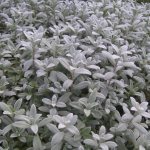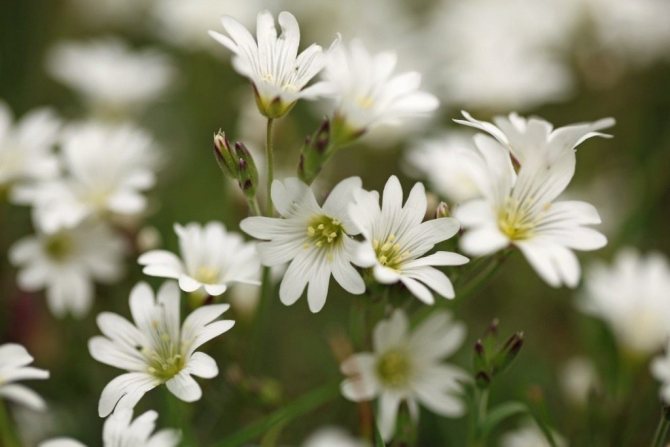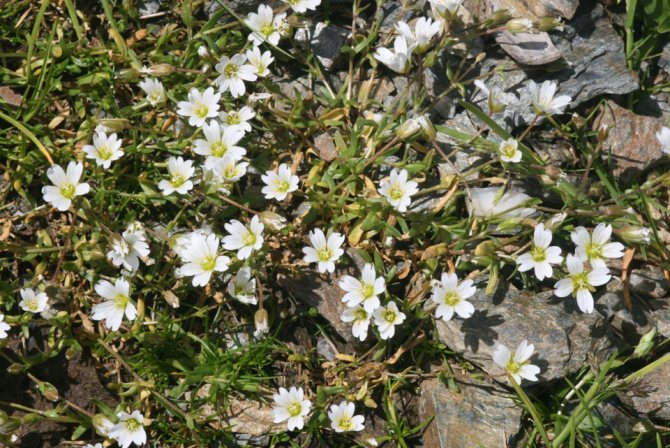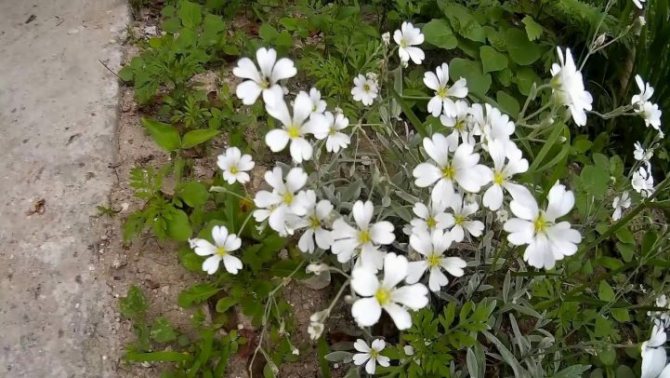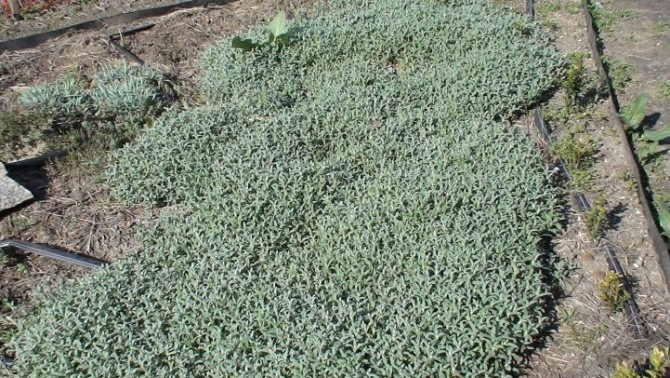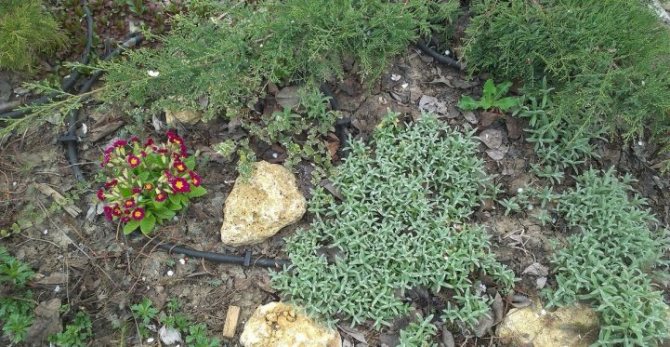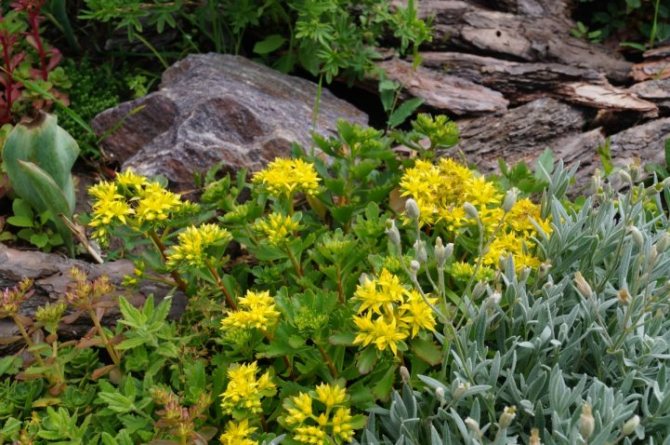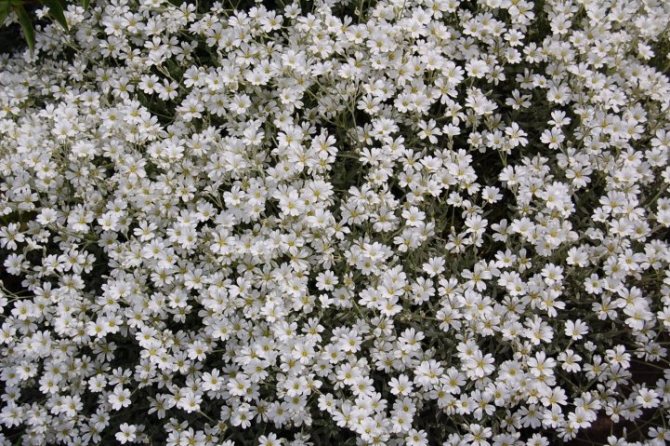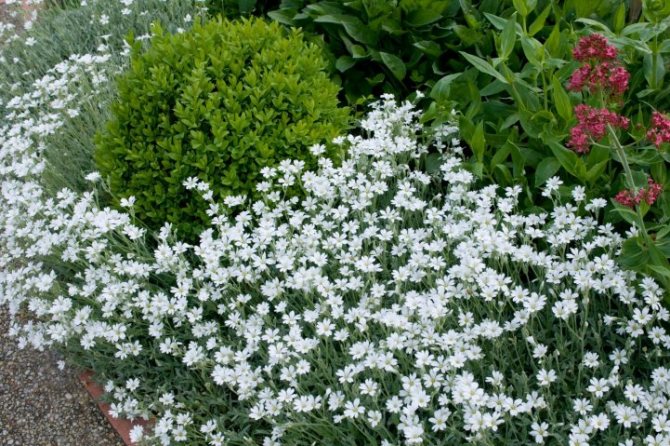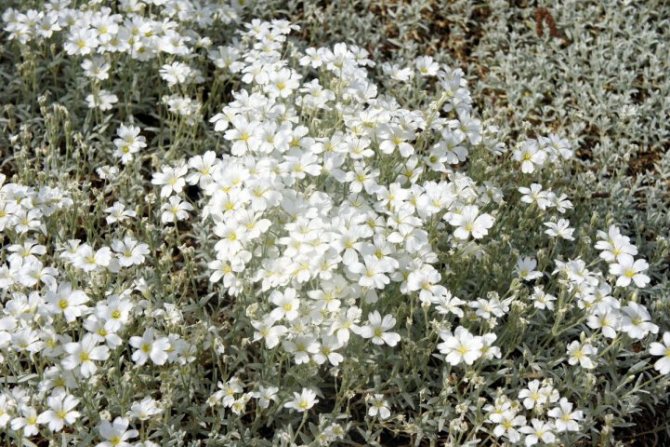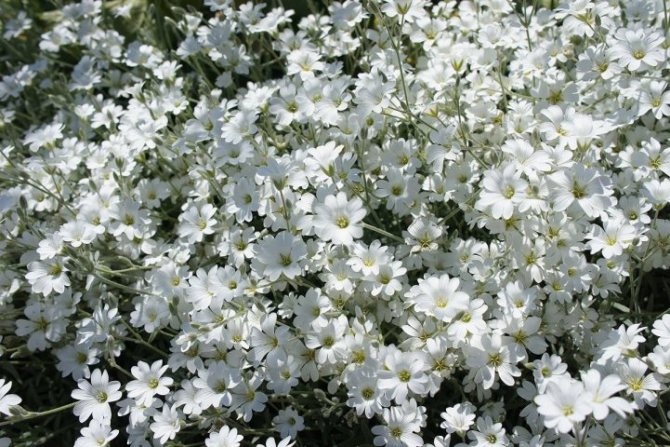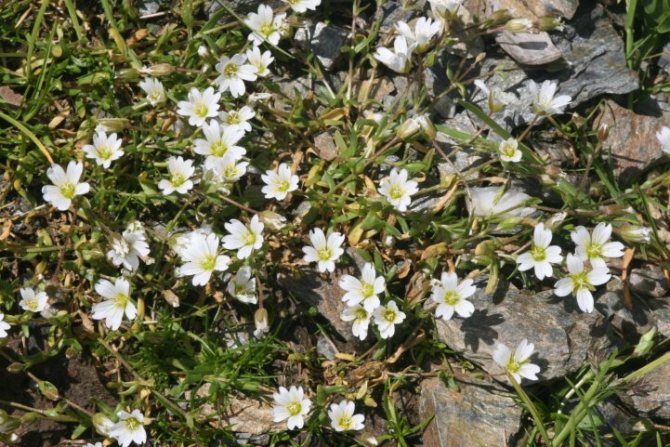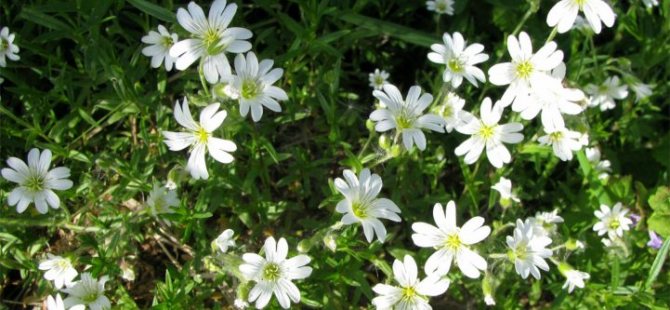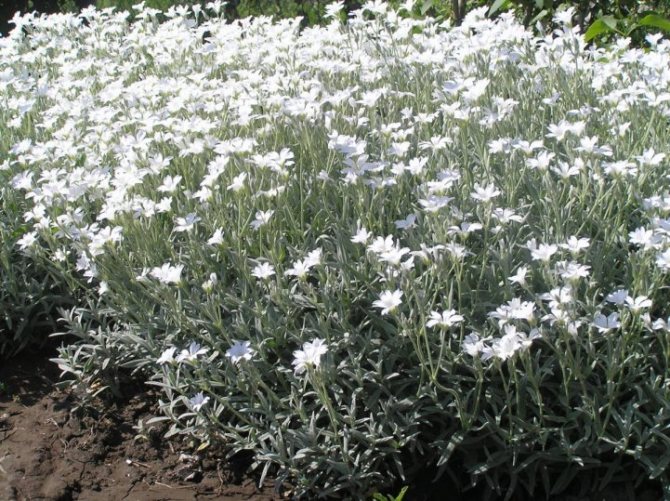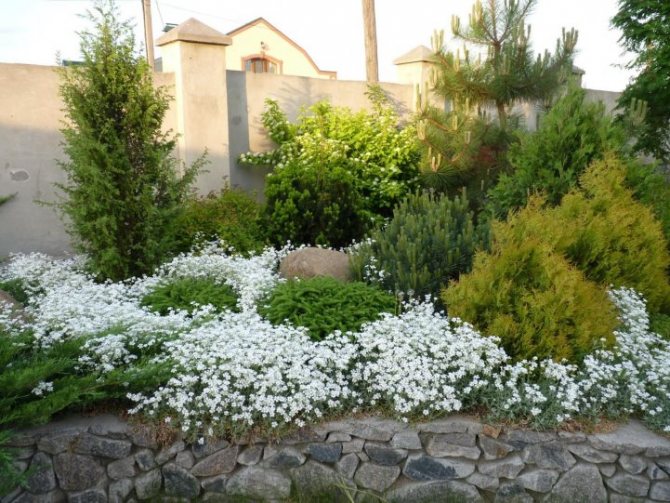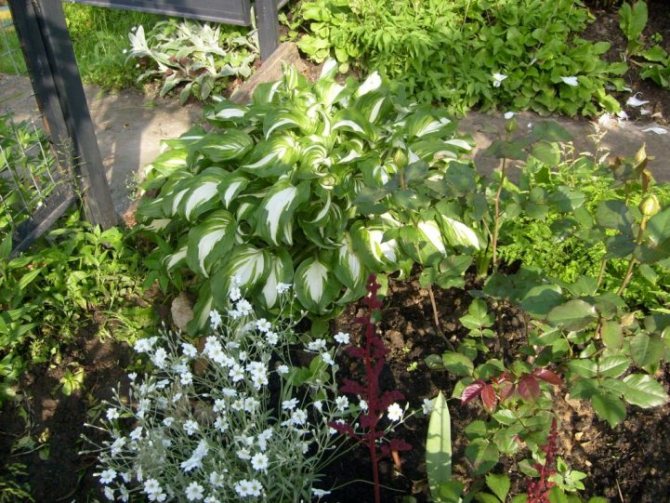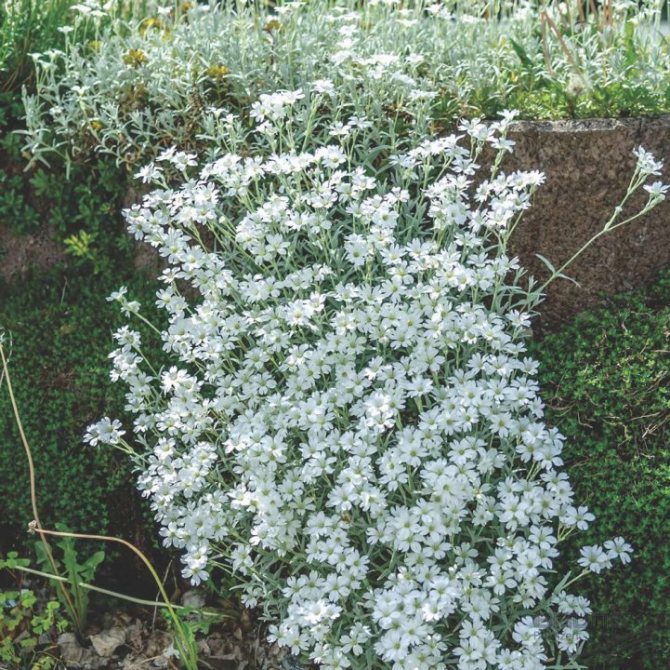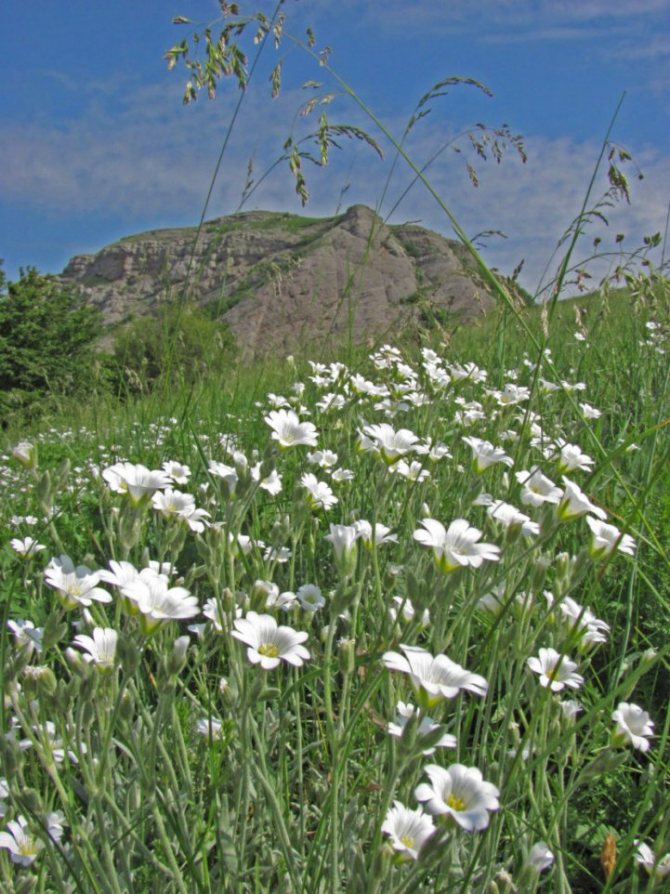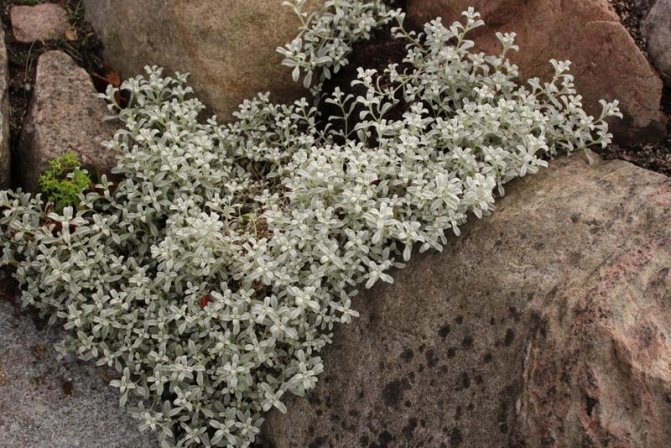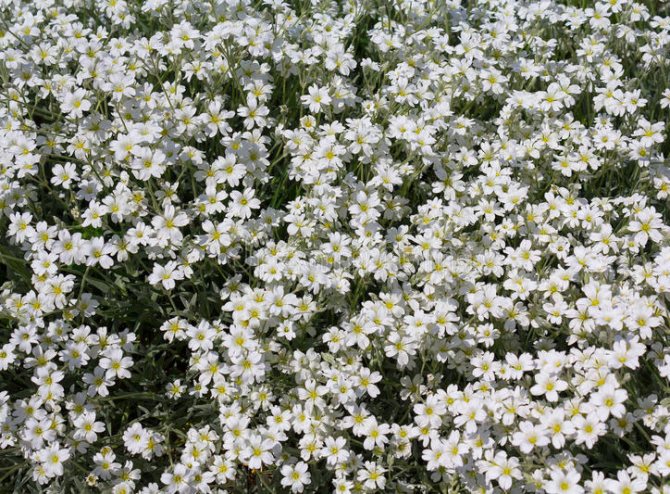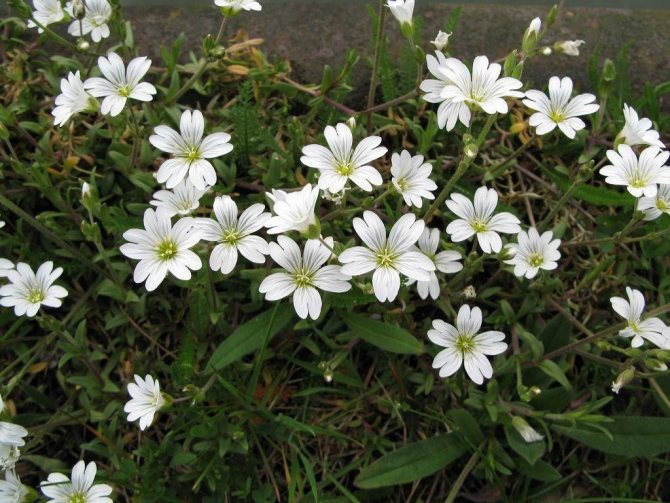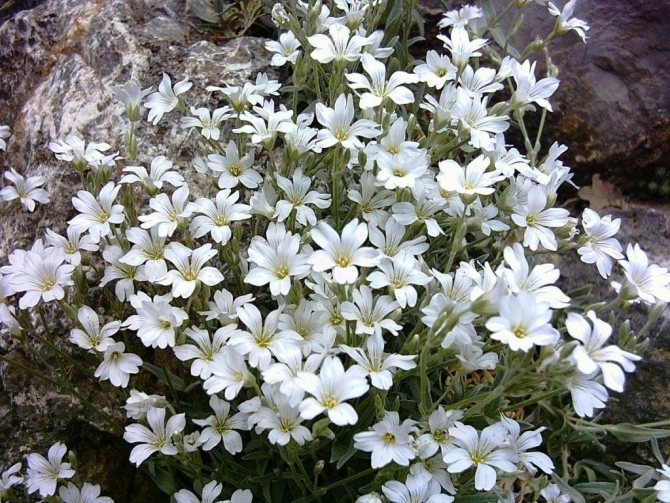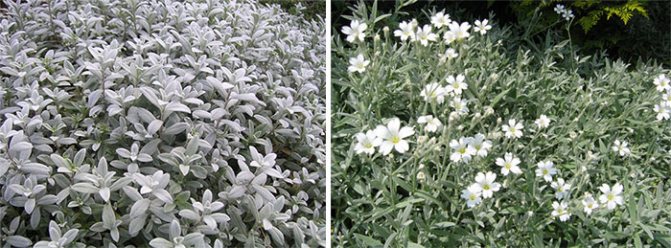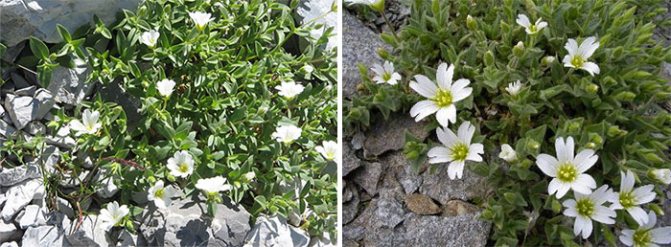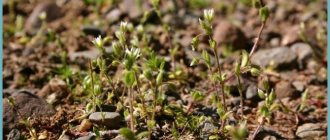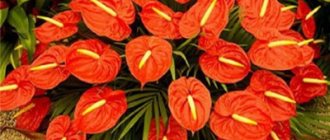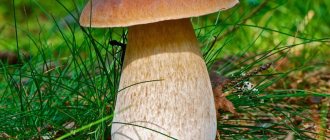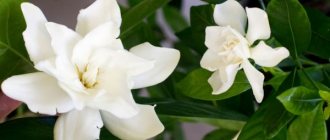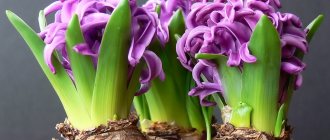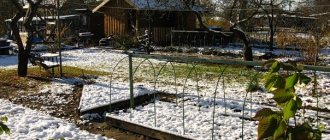Description
Yaskolka (Latin name Cerastium) Is a creeping ground cover plant. There are about two hundred plant species, but only a small number of them are actively grown.

The stems of the plant are erect or ascending. Sometimes bare stems are found, but more often they are still pubescent. The white flowers are mostly double-cut, but one-third of the cut petals can be seen. The fruit of the flower is an oblong box with brown seeds, rounded kidney-shaped.
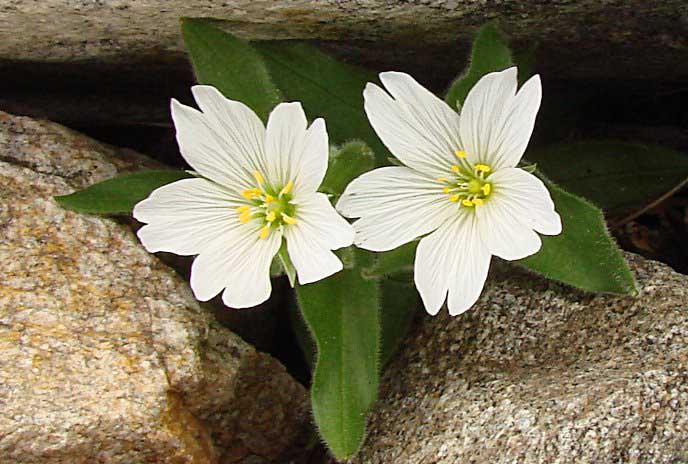

In our latitudes, the cultivation of chickweed is common, but this applies mainly to five varieties.
Photo of Yaskolki
Read here Buddley - types, nuances of application, care and planting in the garden. 110 photos of varieties and a video description of the features of cultivation
Did you like the article?
0
Cultivars
Flowers vary depending on the variety. The most popular varieties should be told in more detail.
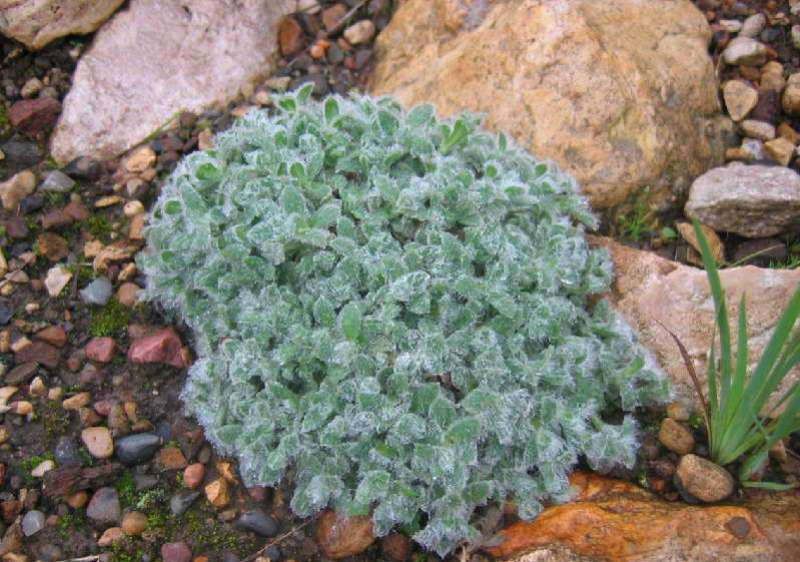

Felt splinter
The stems of the flower are branched, gray tomentose, they form pillows in height reaching 30 cm. And in diameter these pillows are twice as large. Leaves are linear-lanceolate, small. The flowers are white, usually no more than 1 cm in diameter.
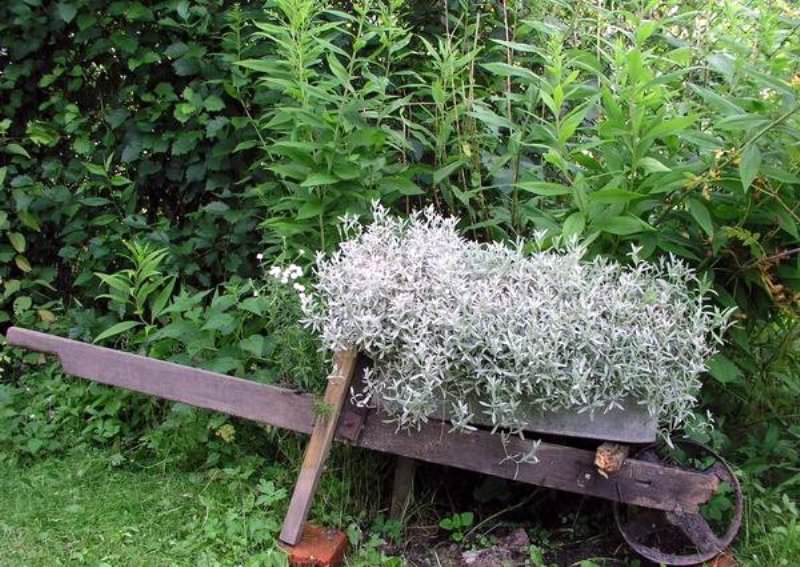

The plant blooms in May, no more than 35 days. The felt variety does not grow, therefore, the flower is usually not planted on the alpine hills. This is a winter-hardy plant, but winter-spring waters are dangerous for it.
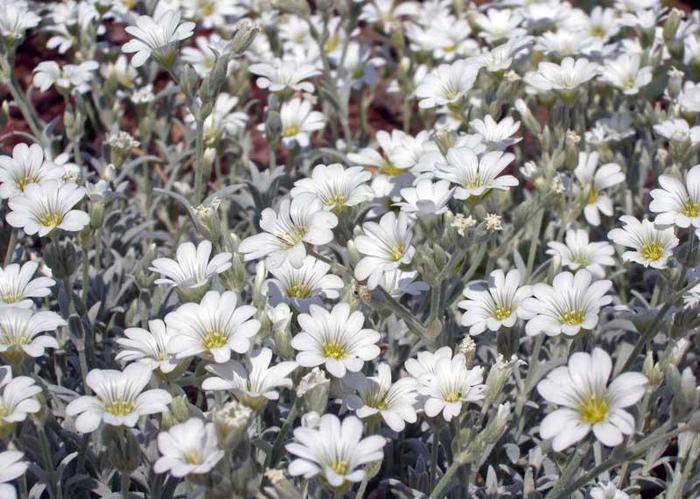

Jaskolka bieberstein
A densely pubescent plant with a characteristic gray color also forms dense cushions. The shoots spread, and the peduncles rise up to 20 cm in height. The leaves are small, sessile, linear. There are also oblong-linear. The flowers of the plant are also white, but slightly larger than those of the felt chrysalis. The petals are split into two lobes at the top.


This shingle blooms in late May - early June, the flowering period does not exceed 30 days... Winter-hardy plant.


Alpine lamb
It reaches a height of 15 cm. Its stems are strongly branched, the leaves are ovoid and have a silvery-green color. White flowers can reach 2 cm in diameter. Flowering begins in May, the usual period is 20-30 days. This variety bears fruit abundantly. He does not like overheating in the soil, too stagnant water. In a snowless winter, it may die.


Lascholka purple
It can reach a height of 25 cm. The leaves are small, lanceolate or oblong. White flowers are collected in umbrellas. Flowering occurs in June.
Large-flowered laskolka
It differs in that the diameter of the flowers reaches 3 cm. Blooming later - July-August. Plant height does not exceed 20 cm.
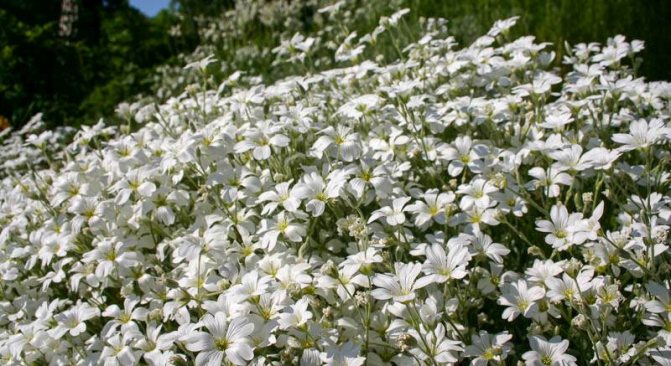

Basic rules of care
Chip care is not time consuming... When growing a perennial, it is enough to follow simple rules.
- Watering. The plant loves moderate watering, easily tolerates drought. Excessive moisture and stagnant water should be avoided, which can damage the root system of the crop.
- Loosening. Periodically, you should loosen the soil around the bushes, enriching it with oxygen.
- Pruning. In order for the shoots of the plant not to stretch and retain their decorative appearance, it is recommended to cut the bushes by half their length in early spring.Timely removal of faded buds will help extend the flowering period.
- Top dressing. As a rule, the plant does not need additional feeding, however, the introduction of organic fertilizers contributes to a more lush and long-lasting flowering of the perennial.
- Transfer. It is recommended to rejuvenate the plant by dividing the bush and replanting it to a new place every three years. This will keep the decorative effect and avoid stretching the shoots.
When caring for a felt chick, it should be remembered that the very dense carpet of the plant retains moisture well. Therefore, this variety does not need additional watering, natural precipitation is enough for it. The only exceptions are long dry periods, during which the flower can be watered periodically.
In general, planting and growing chickweed does not require a lot of time or special skills. She is very unpretentious in care, resistant to various diseases and pests. Due to its frost resistance, it does not require special shelter for the winter.
Planting and caring for the plant
Planting a crop is not a difficult process, but the choice of soil requires adherence to certain nuances. The ideal choice is sandy loam, drained loose soils. For a flower to grow and develop normally, the space intended for it should not be less than 30 cm in diameter.
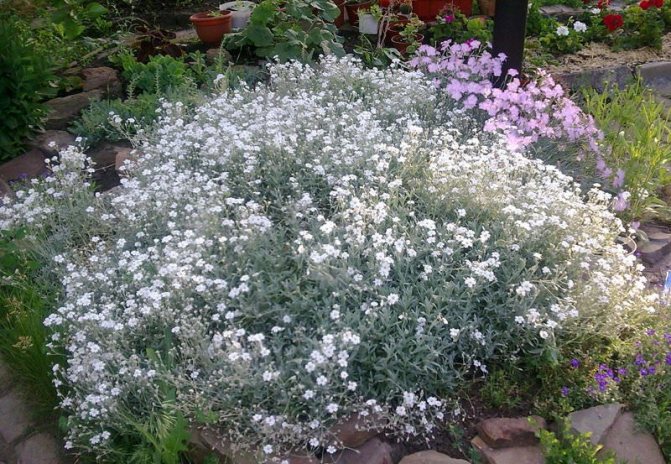

The soil must be loosened before planting, if it is clayey, add sand. The land is usually not fertilized.
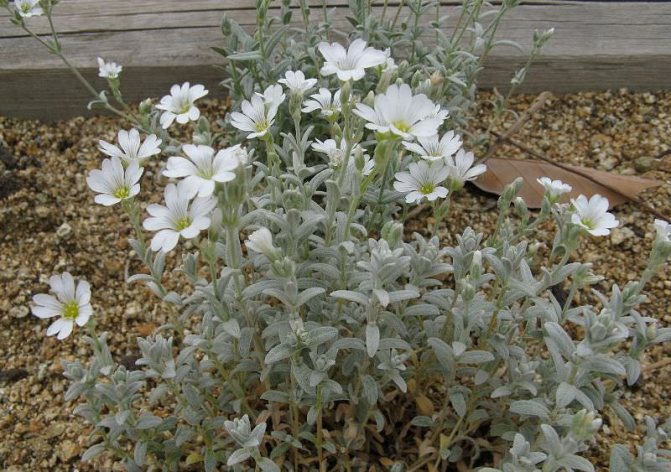

The best breeding method is seedlings. Seeds should be sown in a container with drained soil. This is usually done at the end of April. Seedling care consists in watering the seeds 3 times a week.


If the seeds are planted correctly, then after 2 weeks you can see the first shoots. The optimal temperature regime is 21-23 degrees. It happens that the seedlings are weak, then they require planting in picking cups.


Experts advise growing seeds in February for seedlings, but the method of planting seed in spring directly into the soil is also popular.
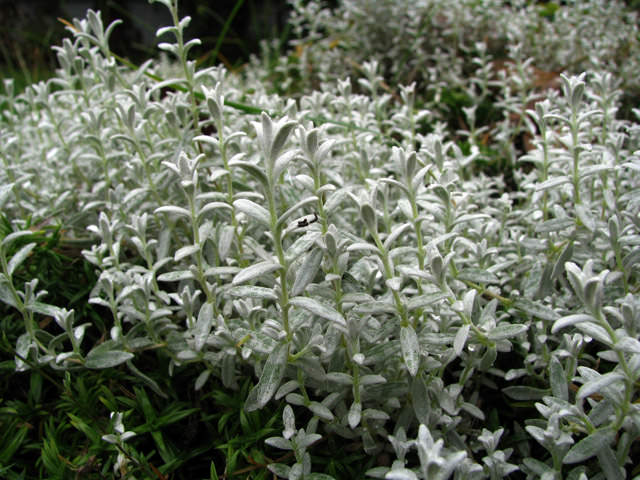

Plant care is as follows:
- regular infrequent watering (once a week);
- after flowering, flowering stems need to be shortened;
- so that the overgrown curtain does not become bare, after flowering it needs to be trimmed (in the photo you can see examples of a neat haircut of the plant).


In winter, waterlogging of the soil should not be allowed, this is the necessary care, without which the plant will simply die. The flower loves bright lighting, but takes root in partial shade. Growing in dim light, on the other hand, will not allow the flower to grow.
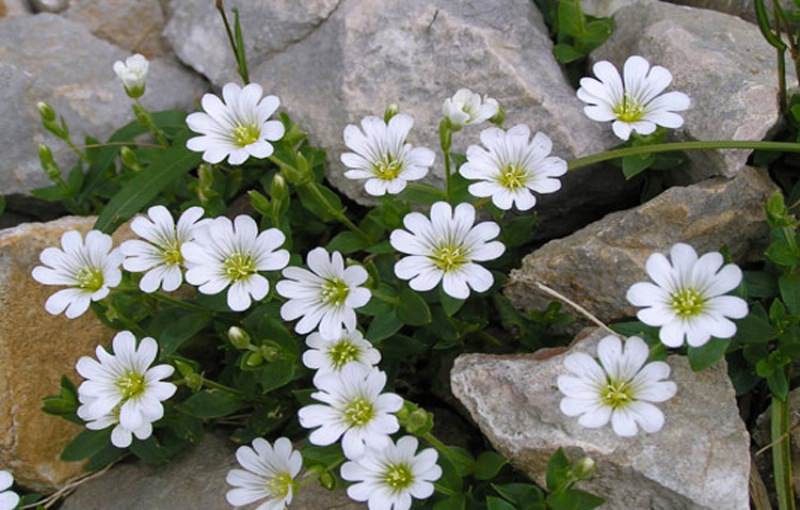

Care in terms of weeding is not required - the plant has reliable protection: its thickets literally swallow up a neighbor. For this reason, the flower is not planted next to delicate, fragile plants.
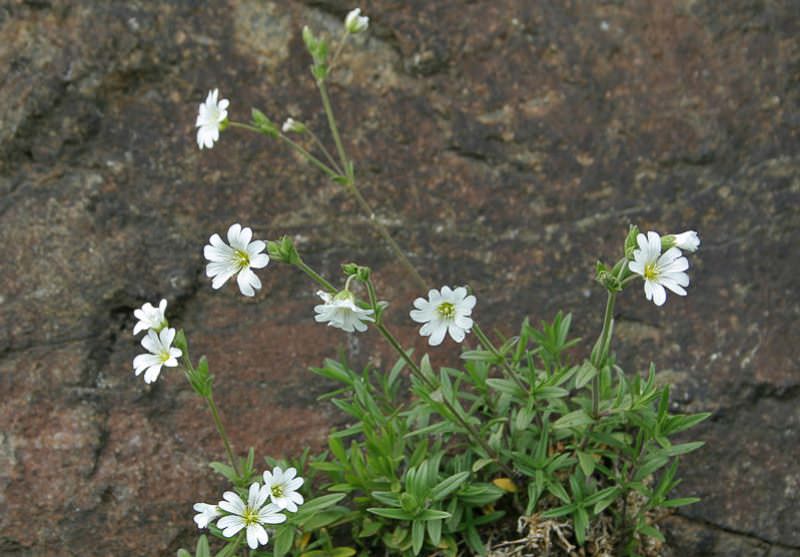

Landing
Growing chickweed is possible from seeds, but still experts advise planting it by cuttings or rooting sprouts. Growing from seeds in the open field is not so effective, since it takes a lot of time and does not guarantee full germination.
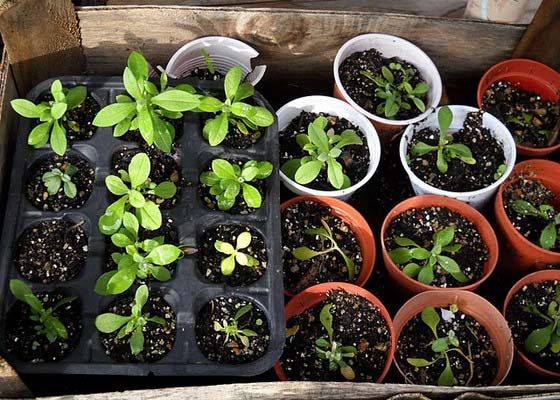

Planting a splinter
Seeds are harvested from fully ripe flowers and begin to sow in early spring in greenhouses or at home as future seedlings. This helps to achieve germination within a couple of weeks.
Seedlings are planted in a heated and well-moistened soil with a distance of twenty-five centimeters between individual plants.
If cultivation in the open field is a priority, then the seeds can be sown in October or April, but with a similar method of planting, the flowering of the chrysalis will occur only in the third year after sowing.
Combination of chippings with other colors
The main requirement for the neighbors of the yaskolka is these should be drought-resistant flowers. Since the plant itself has a neutral white color, it is not so difficult for it to find a neighbor.
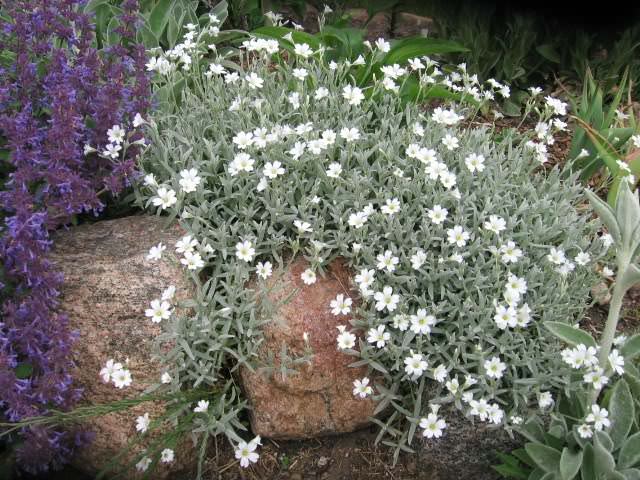

Darkleaf bells and armeria Are ideal companions for the chippers. In addition, this flower is in harmony with:
- cornflowers;
- narcissists;
- tulips;
- hyacinths.
It is not necessary to build a too variegated composition - flowers of delicate shades or one color scheme (for example, lilac) will look best with a chisel.
Pests, diseases, problems when growing chickweed
The chickweed has a fairly strong immunity to pests and infections, but some diseases can affect it. Therefore, it is important to know them in order to overcome them as soon as possible.
| Problem | Cause |
| Slow growth | Planting in insufficiently nutritious soil or lack of stem pruning. |
| Abundant growth | Rejuvenation (dividing by bushes) was not carried out. |
| Fungal diseases | Planting in too moist soil, with stagnant moisture. |
| The flower gets wet | Variable local climate, temperature drops. It is found in the regions of the Russian Federation, from the Leningrad region to the Moscow region and Siberia. |
Use in landscape design
Florists love the shingle for the so-called snowy almost weightless carpet with which it lines the ground. If you need to refresh the flower bed, add lightness, tenderness to the space, the choice of this flower culture is optimal.
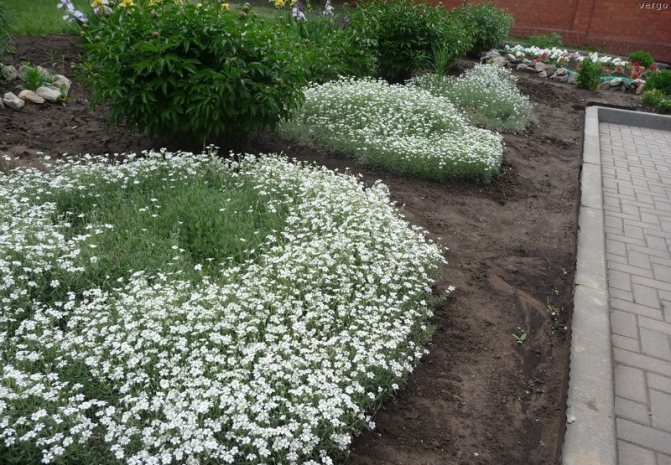

In landscape design, a flower can be used as follows:
- Snow-white bushes will decorate the front of any flower garden.
- Disembarkation at curbs is also encouraged.
- Slopes and not very aesthetic boulders are often set off by this particular plant, it masks the imperfections of the landscape.
- Flowers look great in gazebo baskets. They will also decorate the pots that are displayed on the terraces.
- Often they decorate the soil under trees with a shingle. Snow-white bushes grow, forming the most delicate clearing.
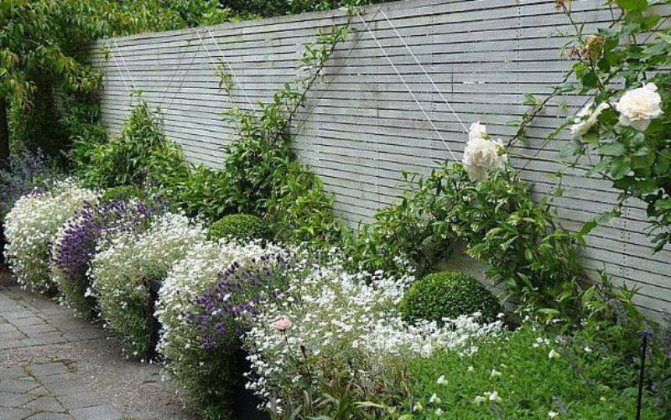

If you decide to decorate your garden with an alpine slide, the rules for the formation of which we have already talked about, then we recommend diluting and refreshing the stone inaccessibility of the composition with the help of an air chisel.
Seed planting in open ground
You can sow chickweed immediately on the site and not waste time growing seedlings. In this case, flowering will come later.
Landing dates
The seeds of the plant are not afraid of the cold. Therefore, they can be sown in the fall. But experienced flower growers recommend doing this in mid-spring. This will enable young plants to grow and harden for winter. And in the spring, the first shoots will not have to undergo frost.
Location selection and lighting
When choosing a place for planting, it should be borne in mind that perennial chickweed quickly fills new territories. Therefore, you need to have enough space for it. This plant is light-loving. It reacts poorly even to partial shade. Therefore, you need to choose a site that is well lit and spacious. Most of the day, sunlight should fall on it. The flower grows well even on the south side.
Landing rules
Before sowing seeds, you need to prepare a bed: dig it up, remove weeds. If the soil is poor, fertilize it with compost or humus. Make shallow grooves at a distance of 15-20 cm from each other. Spread each seed along the groove at a distance of 20-25 cm. Sprinkle on top with a thin layer of soil, water abundantly. You can not make grooves, but scatter the seeds over the surface of the site. Mulch with peat. When the shoots appear, you need to thin them out, leaving 7-8 between each seedling. When they get stronger, plant them at a distance of 15-30 cm from each other.
Caring for the shingle (video)
The most inventive flower growers make unusual compositions from chickweed: they shape the faces of animals, make a “cloud” of chickweed, on which other flowers “travel”. True, this approach requires constant correction of flower bushes.


Yaskolka has a lot of fans, which is understandable - the flower is unpretentious, good-looking and serves as a neutral background for many flower arrangements. Such a blanket of snow will invariably delight the eye, and its simplicity and fragility only adorn the flower.
Wonderful flowering on your site!
Reproduction
In addition to seeds, Yaskolka can be propagated by vegetative methods.
Dividing the bush
Every year the bushes grow up to 0.5 m. Therefore, they need to be rejuvenated and at the same time you can get young plants. In early spring, dig out the cradle. Divide the bush into parts and transplant each to a new place. You can just dig out the cut and plant it, and not dig up the entire bush completely.


Cuttings
The procedure can be carried out before the culture blooms or after flowering. Cut the cuttings 5-10 cm long. You can plant them immediately on the site. But shade for a while from the scorching sun. Cover the planting with cans or plastic bottles on top. You can remove the shelter when the cuttings are rooted.



